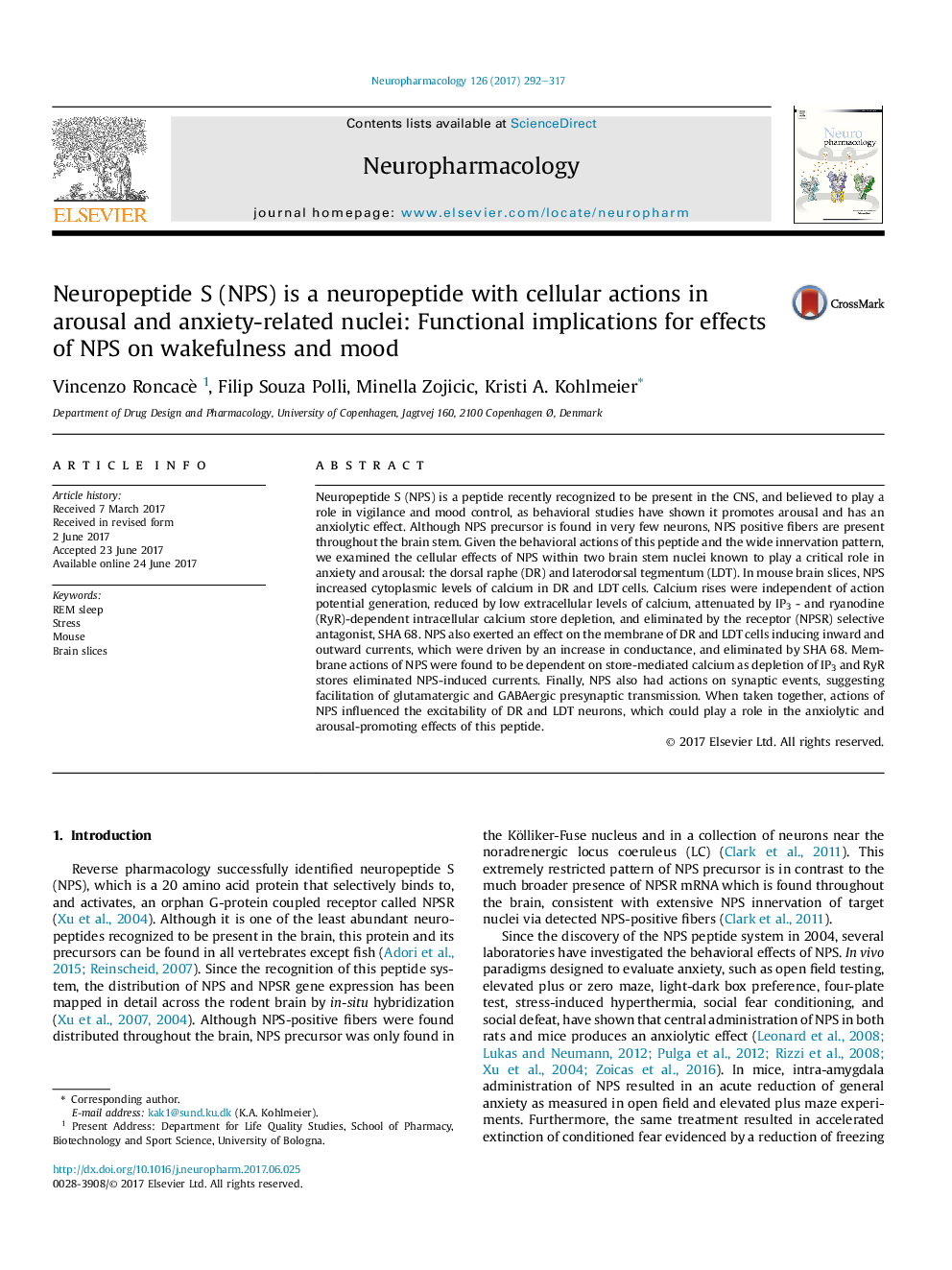| کد مقاله | کد نشریه | سال انتشار | مقاله انگلیسی | نسخه تمام متن |
|---|---|---|---|---|
| 5548727 | 1556591 | 2017 | 26 صفحه PDF | دانلود رایگان |

- NPS induces membrane currents in DR and LDT neurons.
- NPS induces rises in calcium in DR and LDT neurons.
- NPS alters synaptic activity in DR and LDT neurons.
- NPS effects are sufficient to alter firing of DR and LDT neurons.
Neuropeptide S (NPS) is a peptide recently recognized to be present in the CNS, and believed to play a role in vigilance and mood control, as behavioral studies have shown it promotes arousal and has an anxiolytic effect. Although NPS precursor is found in very few neurons, NPS positive fibers are present throughout the brain stem. Given the behavioral actions of this peptide and the wide innervation pattern, we examined the cellular effects of NPS within two brain stem nuclei known to play a critical role in anxiety and arousal: the dorsal raphe (DR) and laterodorsal tegmentum (LDT). In mouse brain slices, NPS increased cytoplasmic levels of calcium in DR and LDT cells. Calcium rises were independent of action potential generation, reduced by low extracellular levels of calcium, attenuated by IP3 - and ryanodine (RyR)-dependent intracellular calcium store depletion, and eliminated by the receptor (NPSR) selective antagonist, SHA 68. NPS also exerted an effect on the membrane of DR and LDT cells inducing inward and outward currents, which were driven by an increase in conductance, and eliminated by SHA 68. Membrane actions of NPS were found to be dependent on store-mediated calcium as depletion of IP3 and RyR stores eliminated NPS-induced currents. Finally, NPS also had actions on synaptic events, suggesting facilitation of glutamatergic and GABAergic presynaptic transmission. When taken together, actions of NPS influenced the excitability of DR and LDT neurons, which could play a role in the anxiolytic and arousal-promoting effects of this peptide.
Journal: Neuropharmacology - Volume 126, November 2017, Pages 292-317